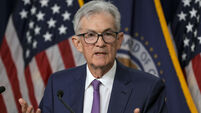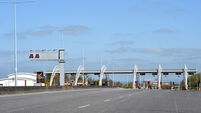Oliver Mangan: Recession fears abating following sharp drop in commodity prices

Refilling gas storage supplies in Europe in the face of much lower Russian flows will be challenging ahead of next winter, writes Oliver Mangan
The title of the International Monetary Fund’s (IMF) recent World Economic Outlook Update sums up the current state of the global economy quite well. “Inflation Peaking amid Low Growth”.
For advanced economies, Consumer Price Index (CPI) rates are seen falling from an average 7.3% in 2022 to 4.6% in 2023 and to 2.6% in 2024. The process is already underway, with headline inflation in the eurozone declining to 8.5% in January from a peak of 10.6% in October, while the US CPI rate stood at 6.5% in December, down from 9.2% last June.

















